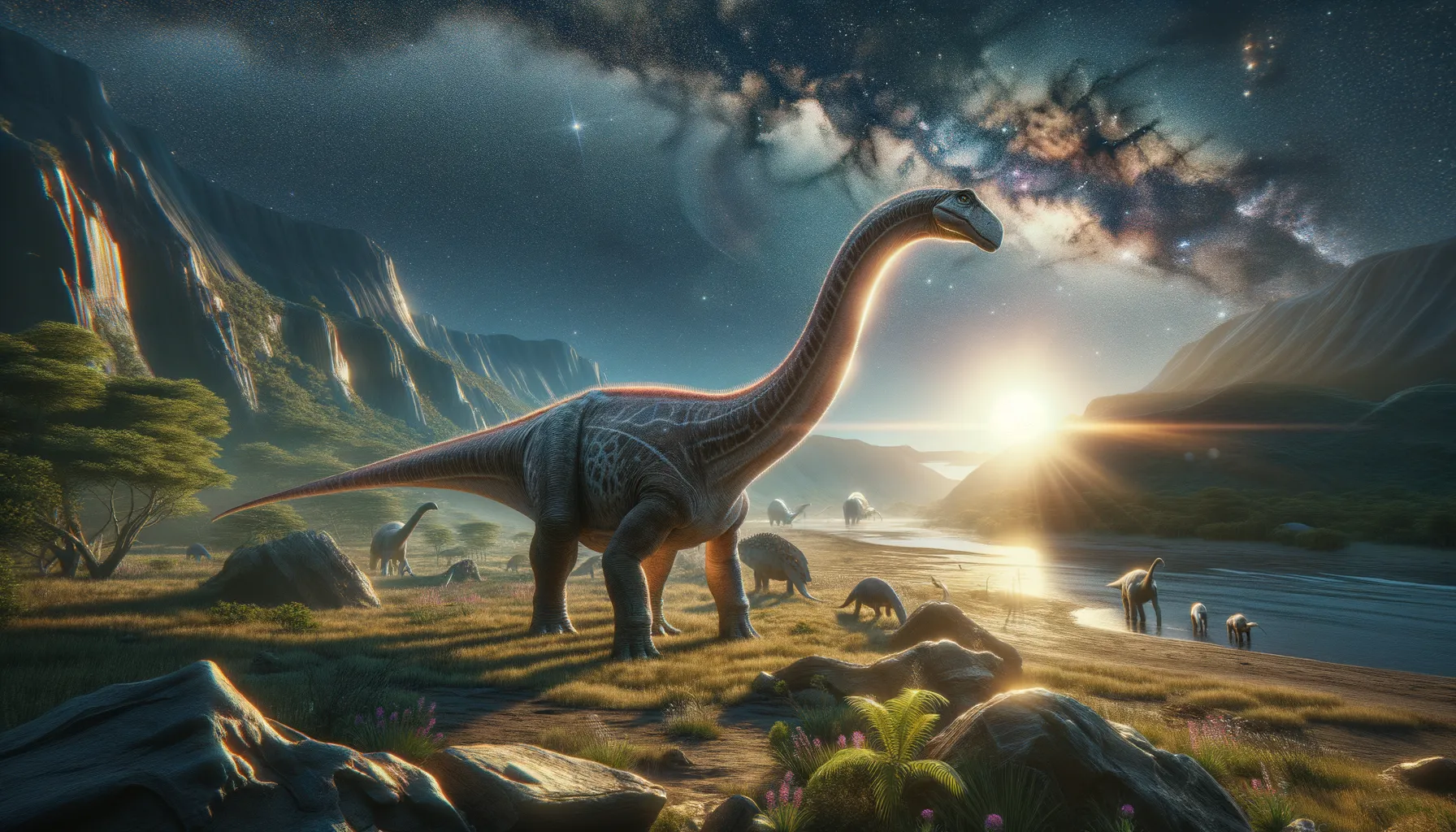
Comahuesaurus
The gentle giant of ancient Argentina.
Period
Cretaceous
Length
About 15 meters long.
Height
Around 3.5 meters tall.
Weight
Approximately 10 tons.
Comahuesaurus was a type of sauropod dinosaur that roamed the Earth during the Early Cretaceous period. Known for its long neck and massive size, this herbivorous giant was part of the diverse ecosystem in present-day Argentina. Its fossils provide valuable insights into the evolution and lifestyle of sauropods, a group of dinosaurs that includes some of the largest land animals ever to have existed.
Diet
As a herbivore, Comahuesaurus fed on a variety of plants. It likely consumed leaves and branches from tall conifer trees and other vegetation within reach of its long neck.
Hunting
Comahuesaurus did not hunt as it was a plant-eater. Instead, it would spend much of its time foraging for food, using its long neck to reach vegetation that other dinosaurs couldn't access.
Environmental challenges
Comahuesaurus faced environmental challenges such as changes in climate that affected vegetation patterns. This could have led to competition for food resources with other herbivorous dinosaurs. Water availability was also a concern, especially during dry periods, as this giant dinosaur required significant amounts of water to sustain its massive body.
Speed
Slow-moving due to its large size.
Lifespan
Estimated to live several decades.
First discovery
First discovered in Argentina in 2001.
Fun Facts
- Comahuesaurus was a long-necked dinosaur that lived around 100 million years ago during the Early Cretaceous period.
- This dinosaur roamed what is now known as Patagonia, a region in Argentina.
- Comahuesaurus was a sauropod, which is a type of dinosaur known for being large, with a massive body and long tail.
- The name 'Comahuesaurus' means 'Comahue lizard,' named after the region in Argentina where it was discovered.
- It likely weighed as much as several elephants and used its long neck to reach plants high off the ground.
- Comahuesaurus belonged to a group of dinosaurs called the rebbachisaurids, which were known for their unique, specialized body structures.
- The first fossils of Comahuesaurus were discovered in the early 2000s, bringing new insights into the diversity of sauropods.
Growth and Development
Young Comahuesaurus likely grew rapidly to reach a size that could deter predators. Growth rates would slow down as they approached adulthood. Their large size also afforded them a degree of safety from predators, allowing them to focus on feeding and growing.
Habitat
Comahuesaurus lived in lush environments with plenty of vegetation. These areas would have included floodplains and forests, where their long necks could access abundant plant life. They might have roamed across large areas to find sufficient food and water.
Interaction with other species
Comahuesaurus shared its environment with other dinosaurs, both herbivores and carnivores. Their size likely kept them relatively safe from most predators. However, they may have had to compete with other large herbivores for food resources, leading to migration or adjustments in diet.
Natural lifespan
Comahuesaurus had a natural lifespan of several decades.
Reproduction
Comahuesaurus likely reproduced by laying eggs in nests dug into the ground. Females may have laid multiple eggs at a time, and these nests were probably located in safe areas away from predators.
Social behaviour
While the exact social behavior of Comahuesaurus is not well understood, it is possible that they traveled in groups for protection. Group behavior could help protect young dinosaurs and increase resource-finding efficiency.
Fossil locations
Fossils of Comahuesaurus have been found in the Neuquén Province of Argentina. These regions have provided important insights into the environment and life forms of the Early Cretaceous period.
